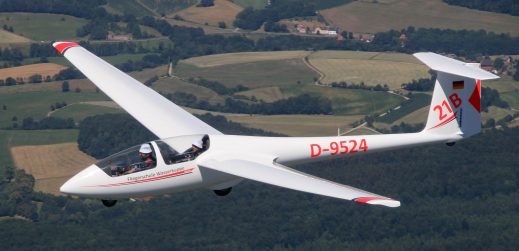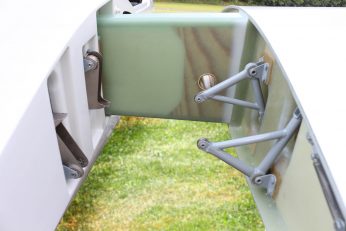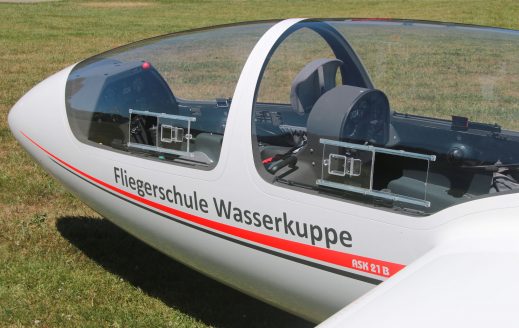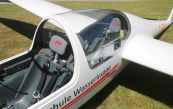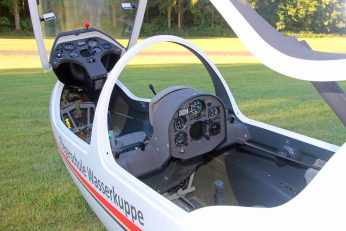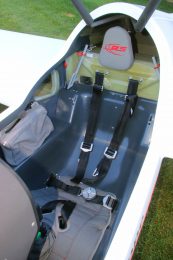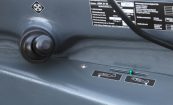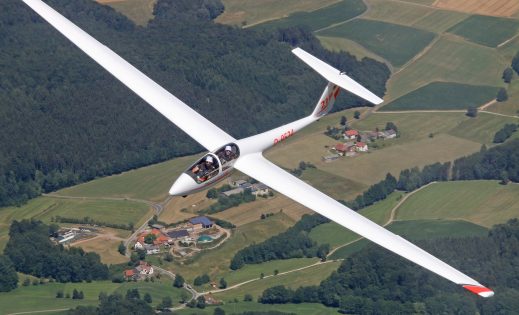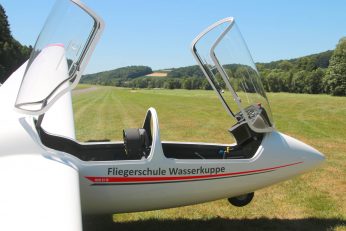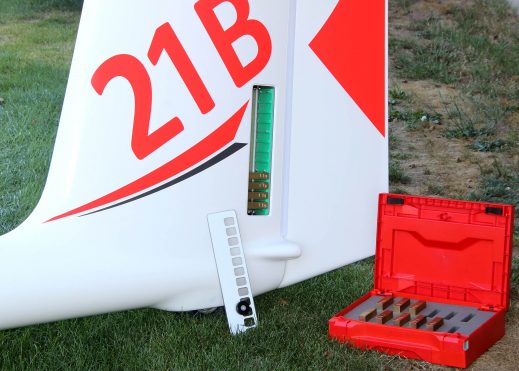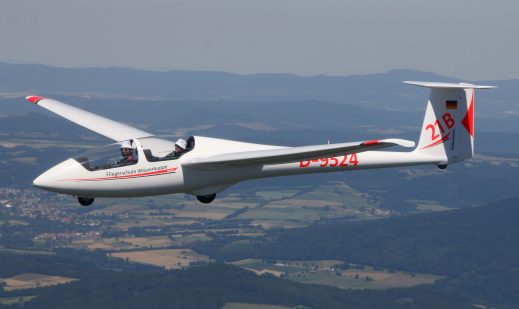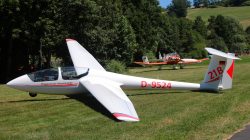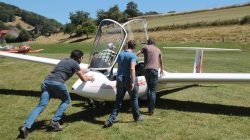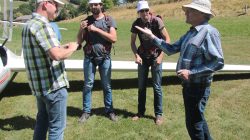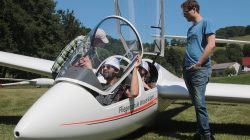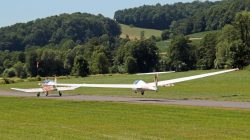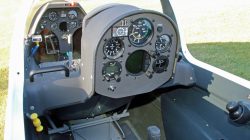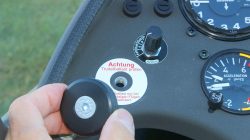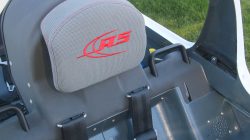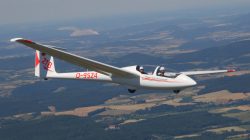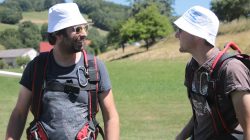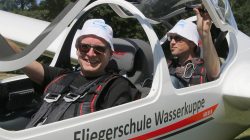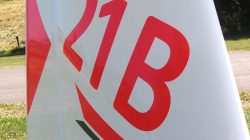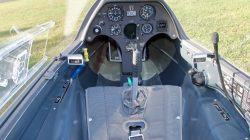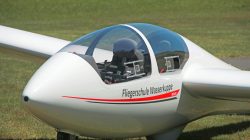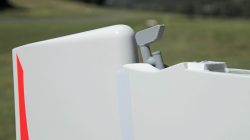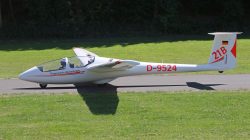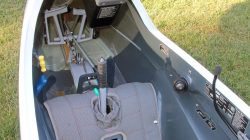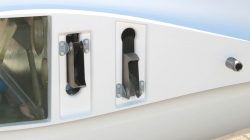New: B-Version of the ASK 21
Well proven training two-seater receives a makeover
An extremely robust structure, very pleasant handling characteristics and simple ground handling made the ASK 21, Rudolf Kaisers first GFK design, not only a huge success but also the standard for training two-seaters.
It’s surely a novelty when an aircraft is produced over such a long period of time without any changes and is still in high demand. It is perhaps only explainable by the fact that Rudolf Kaiser put all of his past design experience into the ASK 21 and gave its many advantages priority over performance consideration.
In gliding clubs it is often the most flown type among all others. The ASK 21s possible total lifespan of 18,000 hours is unique among sailplanes and also speaks to its outstanding quality and robustness.
Automatic control connections
The result of careful further developments is now called ASK 21 B. Without changing the basic character of the aircraft we have incorporated some new ideas and additions, especially to the fuselage. The change to automatic control connections for the wing controls is perhaps the most obvious addition. But the list of other changes is also significant:
- Completely new seat pans for the front and rear cockpits provide additional seating room for large pilots and make for even more comfortable seating.
- The rear instrument support was moved further back which resulted in a larger front cockpit. In both cockpits the control stick was moved further forward which is particularly beneficial for larger pilots.
More safety, more space
- Important elements of a safety cockpit, such as the thigh supports working as ramps with the belly seatbelts attached to them, are also new.
- Easily adjustable seatbacks provide the necessary flexibility for both cockpits. As well, the front rudder pedals have a greater range of adjustment.
- Other small changes on the foot pedals simplify maintenance and changing of the rudder cables.
- The front instrument panel offers more room for instruments without affecting leg room. The lower covers for the instrument pedestal are now included as standard production.
- The forward canopy emergency jettison pivot lever has been replaced by a traction rod system.
- The carrier for the rear instrument panel has been completely re-worked. The new design improves visibility to the sides of the panel. Grab bars to ease exit are also provided. At the same time the rear pilot has more room in the knee area.
- An adjustable head rest is now installed for the rear pilot.
- Energy absorbing, colour co-ordinated and easily removable cushions provide a high degree of comfort.
- Side storage pockets for both cockpits are now standard.
- The trim indication on the right side of the seat pan is now also more visible.
- New ventilation outlets are easier to adjust and aim and also reduce the noise level.
Higher aileron effectiveness
- The large mainwheel, originally meant for the motor glider version ASK 21 Mi, offers additional comfort and will be included along with the tailwheel as standard equipment.
- A flexible seal for the mainwheel cut-out prevents dirt from entering inside the fuselage.
- The former brake system has been replaced by a sealed version so that even during frequent inverted flying air cannot enter the system.
- An improved roll rate as a result of higher aileron effectiveness will be of particular interest to aerobatic pilots.
- A new pitot tube in the nose makes the previously required pitot extension for aerobatic flight unnecessary.
- Lighter pilots will appreciate the simplified installation of the trim weights using a new fitting just ahead of the front seat pan.
- Two battery fittings in the wings are now standard equipment.
- The aileron and elevator gaps are now sealed with mylar bands as standard equipment.
Spin ballast in the fin
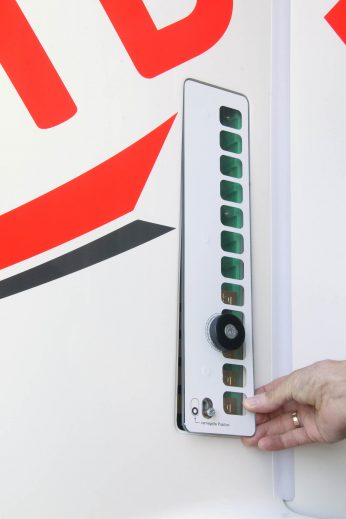
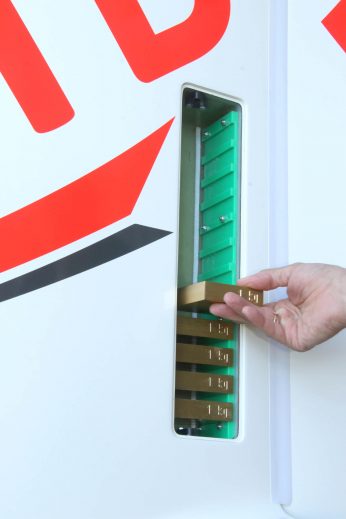 Spin weights are no longer attached to the outside of the vertical fin but are now cube-shaped brass weights placed into a receptacle box integrated into the fin.
Spin weights are no longer attached to the outside of the vertical fin but are now cube-shaped brass weights placed into a receptacle box integrated into the fin.
After the over 950 ASK 21s built so far, we are happy to make this proven, value retaining aircraft even better. We will be proud to hear pilots say:
„It flies like a 21, it is a 21 – but it’s even better“.
Then we will have done everything correctly.
Photos: Manfred Münch

